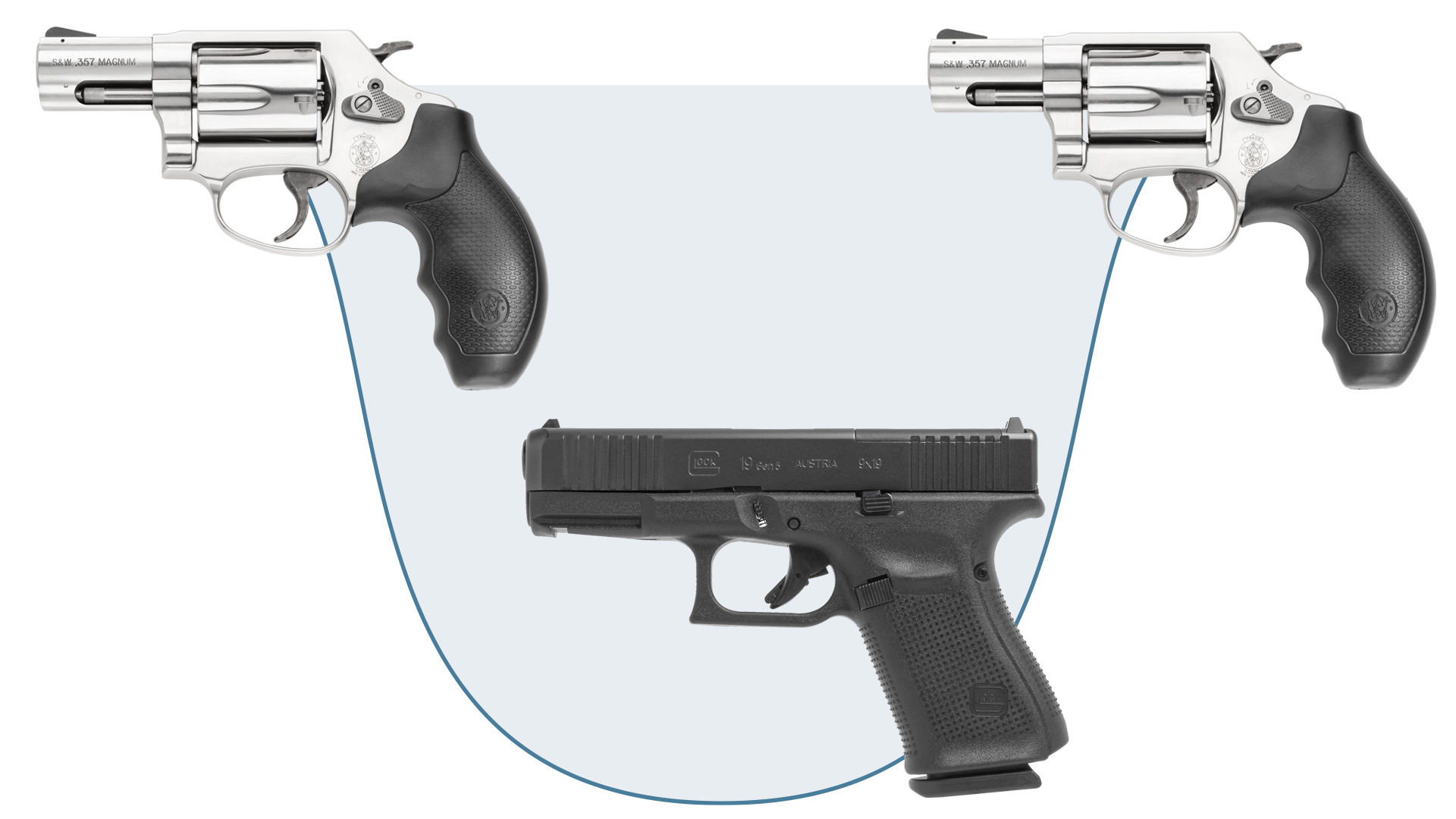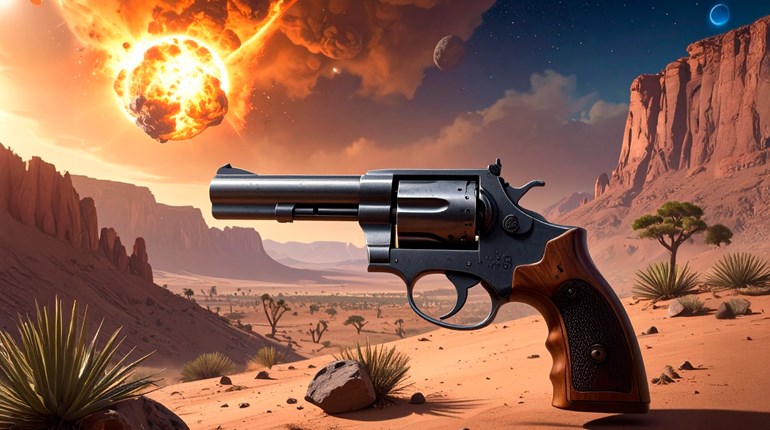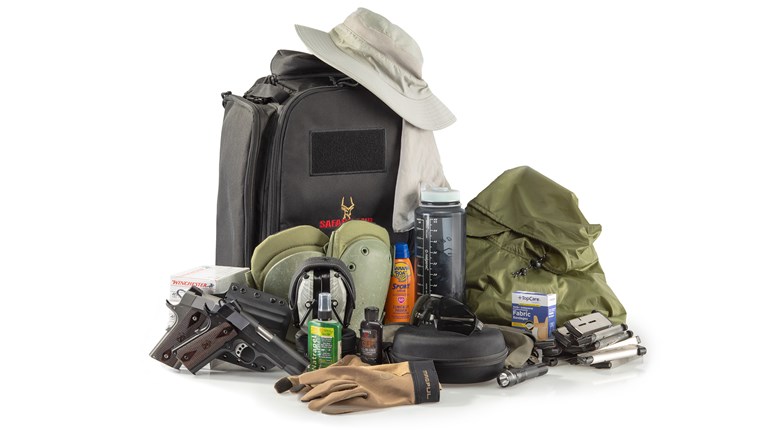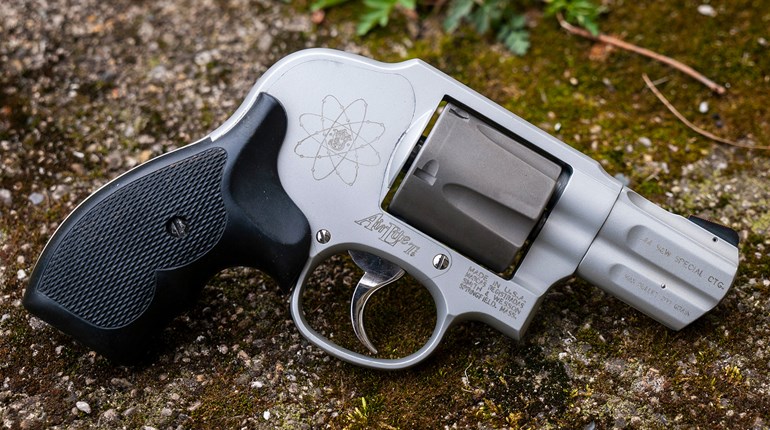
While attending the 2023 NRA Annual Meetings and Exhibits in Indianapolis, IN, I noticed that my longtime friend and colleague Caleb Giddings, competitive shooter, firearms instructor and current marketing guru for Taurus USA, was giving a lecture on the place of revolvers in the modern world of concealed carry and personal defense. Being something of a wheelgun aficionado myself, I figured I’d sit in on his presentation and see what his pitch was going to be to a cross section of engaged NRA members.
He touched on various pros and cons, the utility of the double-action trigger pull, ammunition versatility and that sort of thing, of course, but what I found interesting was what he referred to as the “U-Shaped Utility Curve of Revolvers.”
Basically, the opposite of a bell curve, the U-shaped curve is the highest at both ends. If the vertical axis is the usefulness of a revolver to the user, the horizontal access is the experience of the user with handgun shooting and handgun ownership in general, and the principles of personal defense in particular.
At the one end are the raw novices who may not have any experience at all. Maybe they just got into shooting and firearms ownership, maybe they don’t even carry a firearm and just keep it in a lockbox in the proverbial sock drawer.
For them, the revolver offers simplicity of operation: No manual safety or other external controls to worry about, simplicity in determining whether or not it’s loaded, tolerance of neglect and a goof-resistant double-action trigger with a long and heavy pull.
In that vast middle are people who can benefit from the many advantages of a semi-automatic: capacity, speed of reloading and (usually) a trigger pull more conducive to rapid and accurate shooting.
But, at the other end of the U-shaped curve is a group of experienced shooters, advanced students of personal protection and plenty of retired patrol officers, SWAT cops and SOF door-kickers who live what Darryl Bolke, himself a veteran of decades as a law enforcement officer on the streets, has dubbed “the snubby lifestyle.”
If you manage your life in a way that doesn’t have you going many places where trouble is likely and you have a good level of awareness (and know what the indicators of trouble look like), you’ve already selected yourself out of the vast majority of defensive-handgun uses. Most remaining situations, rare as they are, will likely be along the lines of a mugger or carjacker making a terrible failure in the victim-selection process.
If you can drive a snubby well enough to hit plates at 20 to 25 yards or so reliably, there’s not much that’s likely to go down in Mayberry that can’t be solved with a light- weight revolver or (often) two in the pocket or on an ankle.
I got to thinking about the “U-shaped curve” thing and found it a useful measurement for other handgun-related factors.
Take triggers, for example. In a discussion at the range once, I had a guy going on and on about how striker-fired pistols were horrible, how you “couldn’t hit nothin’ with a Glock” and that’s why all the bullseye shooters used 1911s, a true connoisseur’s pistol. Now, I like a 1911 as much as the next kid, but I happened to be carrying a Glock G19 back in those days, so I asked what he meant by not being able to hit anything. He clarified that for spraying a paper target at 7 yards, a Glock was fine, but if you wanted to hit something out yonder—here he gestured toward where we had some permanent A/B steel out at the 25-yard berm—well then you need a better trigger.
So, I proceeded to wear out the A/B steel with the Glock.
Not that that’s any kind of fancy trick shooting, but to someone who doesn’t shoot a lot, or thinks 25 yards is “long range,” it looks pretty radical. For the casual once-every-month-or-two shooter, that short, light single-action trigger is something of a crutch. If you have a hard time holding the gun still while the trigger is being pulled, every little bit helps. On the other hand, if you go to any action-pistol match, you’ll see plenty of good work getting done with what are, by the standards of a nice 1911, pretty so-so, “meh” triggers.
At the other extreme of Giddings’ U-shaped curve, the top-end competitors in any discipline, from NRA Precision Pistol to USPSA Open shooters, are gonna be rocking some pretty sweet triggers with short, light pulls. For them, with victory being decided by thin margins, we find ourselves back into “every little bit helps” territory.
My other favorite denizen of the U-curve is bore axis; the height of the bore’s centerline above the shooter’s hand. This gets brought up in advertising a lot, which is how come even the most casual shooters may be aware of it, and they’ll talk about it quite a bit.
After all, if you don’t shoot a bunch and your grip and technique aren’t well-developed, anything that works to help tame the dreaded muzzle flip and soften perceived recoil is going to be quite noticeable. Get your grip and technique down a little better, and the relatively minor differences in bore axis get smoothed out and obscured in numerous other characteristics that affect muzzle flip and split times (the ability to make rapid follow-up shots.)
Personally, I long ago stopped noticing a difference in bore-axis effect between, say, Glocks and SIGs —but I’m somewhere out in the middle of that U-curve. I say this because I’ve talked to friends who are really accomplished pistol shooters, the kind who burn down a FAST (Fundamentals, Accuracy and Speed Test) in the 5-second range and take home trophies, plaques and such, and a bunch of them tell me how big of a difference a minor variation in bore axis can make for them as they’re tracking the sights and trying to shave thousandths of a second off of their split times.
It’s worth keeping these factors in mind when evaluating the necessity or desirability of a host of characteristics. The thing that makes a handgun ideal for someone else might not be a very big deal to you—and vice-versa.





































